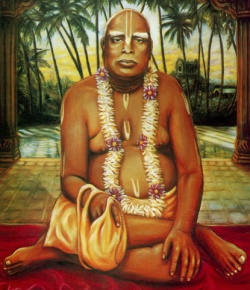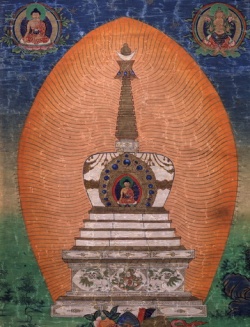The Excellent Path of the Great Vehicle
The Excellent Path of the Great Vehicle
How to Meditate on the Three Gateways to Liberation According to the Mahāyāna
by Rongtön Sheja Künrig
Homage to the guru and the supreme deity!
Your wisdom is perfectly clear like the sphere of the sun,
And in your compassion, you care for all limitless beings,
Your enlightened actions continuing until the ends of time—
Supreme sage, in devotion I bow down before you!
Ācārya Haribhadra, in explaining the practice of meditating upon the three gateways to liberation, explains how the three gateways can be related to meditation upon the sixteen aspects of the four noble truths, beginning with impermanence.
Here, when we explain the three gateways, i.e., emptiness, absence of characteristics and wishlessness, according to the tenets of the Mahāyāna, emptiness is applied to the basis, signlessness is applied to the path, and wishlessness is applied to the result.
Firstly we must explain the three conceptions which block these gateways to liberation:
Perceiving the basis as real blocks the gateway of emptiness;
Believing the path to have real characteristics blocks the gateway to absence of characteristics; and
Considering the result as something to be wished for blocks the gateway to wishlessness.
It is in order to eliminate these three ideas which block the way to liberation that we practise the meditation upon the three gateways.
‘Basis’ here refers to the aggregates, elements and sense fields. Coemergent ignorance with regard to these functions as the root cause of saṃsāra. As it says in the Seventy Stanzas on Emptiness:
Genuine conceptual thought—
This, the Teacher has said, is ignorance.
As this indicates, this is the basis of saṃsāra. In order for it to be overcome, we must come to a definitive conclusion about the emptiness of the basis, and then practise the meditation on emptiness. Then, by abandoning the perception of the basis as real, the gateway to emptiness will be opened.
When we are meditating on emptiness, if we consider that this meditation has any real characteristics, that will only serve to entangle us. As it is said:
The aspects are the ceasing of clinging and so on.[1]
We must put a stop to any clinging towards the four truths, therefore even attachment to the path is something to be avoided, and that is why we must meditate on the path as lacking true characteristics. By meditating on the samādhi of ‘marklessness’, the gateway to the absence of characteristics will be opened.
It is said:
Its equality consists of the four aspects
Of absence of conceit regarding forms and the rest.[2]
At this time, it is said, we must not entertain any form of conceit in our thoughts. We must abandon not only the hope that there is some fruition to be gained from some other method, but even the hope of gaining some result through realizing emptiness. Doing so will open the gateway to wishlessness.
This explanation, in which the three samādhis are related to basis, path and result, is given from the perspective of the mahāyāna. It is the way to practise the meditation on the three gateways to liberation. The explanation of the path-knowledge consisting of these three gateways to liberation must be related to the mahāyāna approach.
Through whatever merit has been gained through this authentic explanation
Of how to practise meditation on the three gateways to liberation,
The meaning of which is hard for others to understand in spite of all their efforts,
May all beings enter the way of the great vehicle!
This Excellent Path of the Great Vehicle: How to Meditate on the Three Gateways to Liberation according to the Mahāyāna was written by the great Rongtön in the monastery of Nalendra in the month of Saga Dawa during the Rabjung year.
| Translated by Adam Pearcey, Rigpa Translations, 2007.
Abhisamayālaṃkāra, Chapter 1, v 28 c. ↩
ibid, Chapter 3, v 10 bc. ↩


